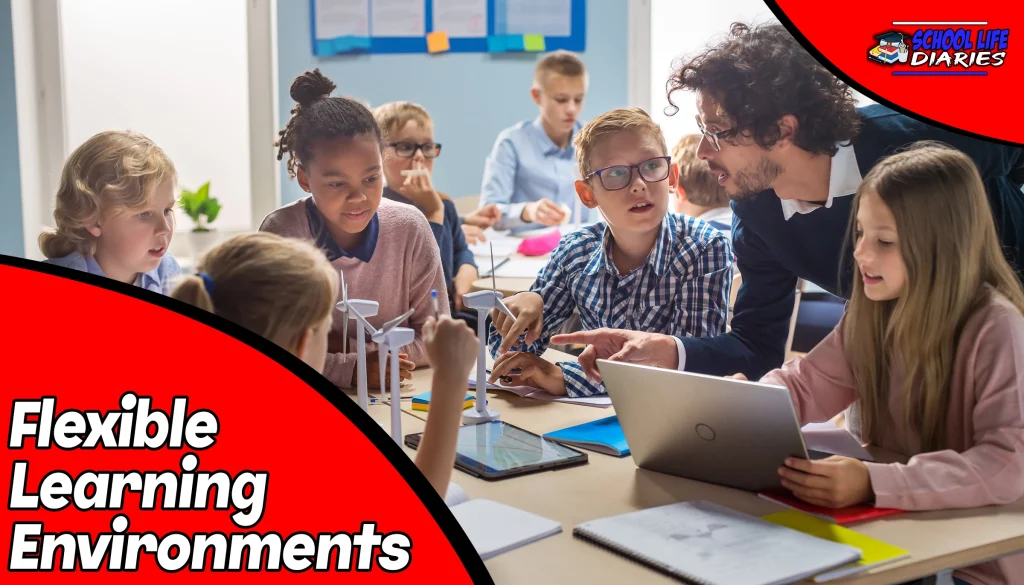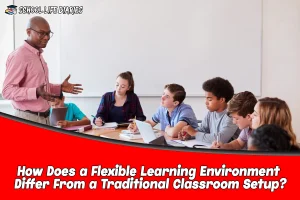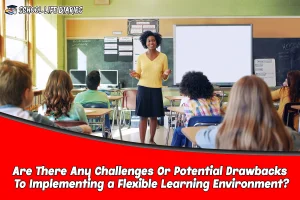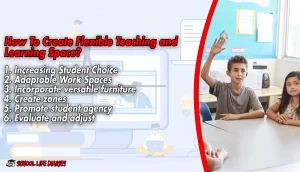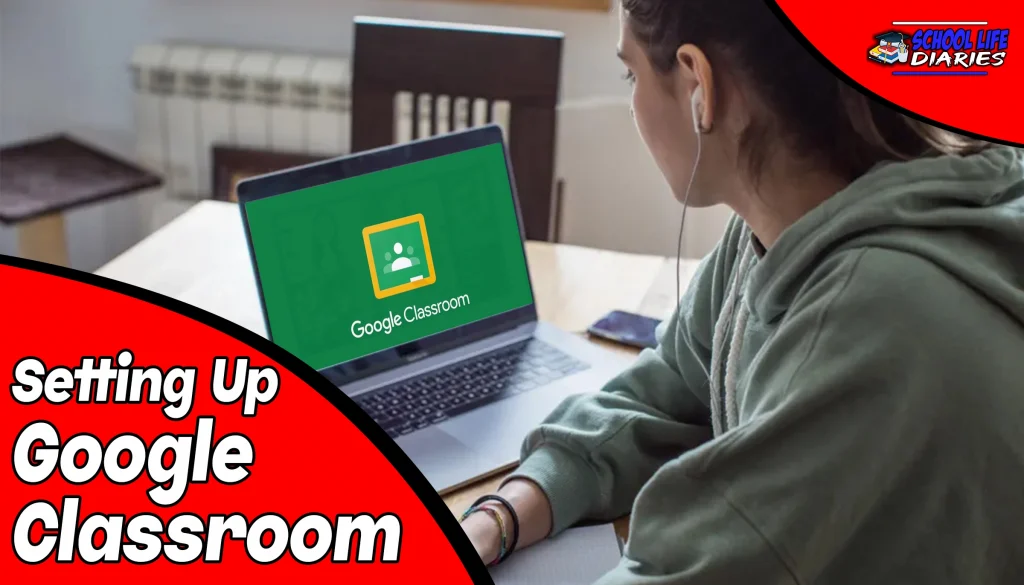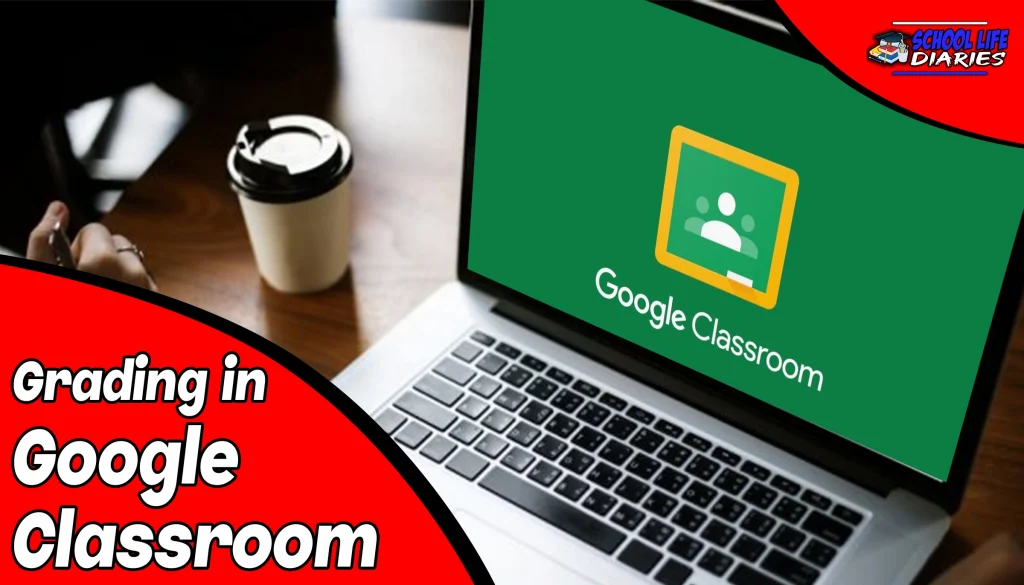Flexible learning environments are becoming increasingly popular in educational settings as educators recognize the benefits of creating spaces that can adapt to different teaching and learning styles. These spaces are designed to break away from traditional classroom setups, where desks are lined up in rows and students sit facing the teacher. Instead, flexible learning environments focus on creating adaptable spaces that can be quickly reconfigured to support different types of activities.
The concept of flexible learning is rooted in the idea that students learn best when they have control over their own learning experiences. This means providing them with opportunities for collaboration, exploration, and individualized instruction.
Flexible learning environments aim to promote this sense of agency by giving students more say over how they engage with course content and interact with their peers. By breaking down barriers between classrooms, these spaces create a more inclusive environment that supports a variety of teaching methods and promotes student autonomy.
What Is Flexible Learning?
Flexible learning is a pedagogical approach that allows for various modes of delivery and enables learners to have control over the time, place, pace, and content of their learning.
This type of learning environment offers great benefits to both students and educators. For instance, flexible learning caters to diverse student needs and preferences by providing multiple options for accessing course materials.
Students can choose to learn through online platforms or attend face-to-face sessions depending on their schedules. Implementation strategies for flexible learning vary depending on the institution’s goals and resources. Some institutions may opt to redesign their physical spaces to allow for collaborative or independent learning.
Others may invest in technology that supports remote access to course materials or virtual classrooms that facilitate real-time interactions between students and instructors. Research findings suggest that flexible learning environments positively impact student outcomes such as engagement, motivation, performance, and retention rates.
Flexible learning is a powerful pedagogical approach that has gained popularity due to its ability to meet the diverse needs of learners while promoting effective teaching practices.
The benefits of this approach are evident in improved student outcomes such as engagement levels and academic performance – making it an attractive option for institutions looking to enhance the quality of their education delivery methods.
With careful planning and implementation strategies tailored towards specific institutional contexts, flexible learning can transform traditional classroom settings into dynamic spaces that foster creativity and innovation amongst learners.
How Does a Flexible Learning Environment Differ From a Traditional Classroom Setup?
In contrast to the typical classroom arrangement, a flexible learning environment allows for more diverse and adaptable spaces that can accommodate various teaching methods and student needs. Traditional classrooms are characterized by rows of desks facing the front of the room where the teacher delivers lectures.
In contrast, flexible learning environments feature movable furniture, open spaces, and technology-enhanced tools that enable students to work in groups or individually as per their preferences. Flexible learning environments promote student engagement by providing opportunities for inquiry-based learning.
Students can choose their tasks based on their interests, skills, and abilities. Teachers can guide them through problem-based lessons that challenge them to think critically and creatively. As a result, learners become more self-directed and confident in their abilities. Ultimately this leads to higher academic achievement as learners become active participants in their education rather than passive recipients of information.
The Benefits of These Flexible Learning Spaces Include:
The advantages of incorporating adaptable spaces in educational settings are multifaceted, with research indicating improved student motivation, engagement, and achievement.
One benefit of flexible learning environments is the ability to encourage collaborative learning. These spaces allow students to work together on group projects or discussions without the constraints of traditional classroom arrangements.
This not only promotes teamwork but also allows for a more personalized approach to instruction as teachers can better facilitate individual needs.
Another advantage of flexible learning spaces is that they foster active engagement among students. By providing various options for seating arrangements and activities, students are encouraged to move around and participate in hands-on experiences.
This type of environment promotes creativity and critical thinking skills as it challenges students to think outside the box and take ownership of their own learning.
Teachers can also tailor lessons based on student strengths and weaknesses which ultimately leads to higher levels of achievement overall. Overall, flexible learning environments offer numerous benefits that support student success both academically and socially through collaborative learning, personalized instruction, and active engagement strategies.
Are There Any Challenges Or Potential Drawbacks To Implementing a Flexible Learning Environment?
Implementing adaptable educational spaces may present challenges and potential drawbacks. One of the most significant potential setbacks is resistance to change from traditional classroom models. Teachers, students, and parents have become accustomed to a certain way of learning that is structured around desks, textbooks, and lectures. The shift towards flexible learning environments can be daunting for some educators who may not feel comfortable with the new pedagogical approaches that come with it.
Logistical challenges are another potential drawback when implementing flexible learning environments. These spaces require significant investments in equipment and technology which can be financially burdensome for schools or institutions with limited budgets. Moreover, these facilities need constant maintenance to ensure that they remain functional throughout their lifespan.
This means that institutions will have to invest resources in hiring personnel who can maintain the equipment or outsource the service from third-party providers.
Teacher training is also a crucial aspect of implementing flexible learning environments successfully. Educators must learn how to navigate these innovative spaces so they can provide students with an optimal learning experience. From understanding how best to use technology to adjust teaching strategies based on individual student needs, teachers will need comprehensive training programs that prepare them for this new approach to education.
How Can Technology Be Integrated Into a Flexible Learning Environment?
Technology can seamlessly integrate into modern educational spaces, offering students and teachers transformative opportunities for interactive learning experiences.
In a flexible learning environment, technology has the potential to enhance student engagement by providing them with access to various digital tools and resources that cater to different learning styles. Technological advancements have made it possible for teachers to develop personalized pedagogical strategies that align with their student’s abilities and interests.
When integrating technology into a flexible learning environment, it is crucial to consider its pedagogical implications. Teachers must ensure that they use technology in ways that complement their teaching practices while catering to the diverse needs of their students.
This may involve adopting a blended approach that combines traditional classroom instruction with online activities or using multimedia tools such as videos, podcasts, and animations to supplement lesson plans. Educators must be mindful of the pedagogical considerations when incorporating technology into their teaching practices and ensure that they maintain a balance between digital tools and face-to-face interactions.
How To Create Flexible Teaching and Learning Space?
This section will discuss the creation of flexible teaching and learning spaces, emphasizing key points such as increasing student choice, adaptable workspaces, incorporating versatile furniture, creating zones, and promoting student agency.
The aim is to provide an environment that can adapt to the diverse needs of students and promote their engagement in the learning process. Research has shown that such environments can lead to improved outcomes for learners by fostering creativity and collaboration while also giving them a sense of ownership over their learning experiences.
1. Increasing Student Choice:
Expanding the range of options available to students can foster a more personalized learning experience that accommodates diverse learning styles and interests, ultimately enhancing student engagement and motivation. Providing students with a choice in their learning allows them to take ownership of their education and feel empowered in the classroom.
This can be achieved through offering various modes of instruction, such as project-based learning, online resources, or collaborative group work. Increased motivation is often seen when students are given the opportunity to choose topics or projects that align with their personal interests.
Student engagement is also enhanced when they are able to make decisions about what they learn and how they learn it. By providing choices in the classroom, teachers are able to create an environment that promotes creativity, critical thinking skills, and a love for learning.
2. Adaptable Work Spaces:
The design of adaptable workspaces has become increasingly popular in educational settings to enhance student engagement and collaboration. Collaborative design, ergonomic furniture, and spatial planning are key elements that make these workspaces flexible and functional.
Adaptable workspaces promote a sense of community among students by providing opportunities for group work and social interaction. Ergonomic furniture such as adjustable tables and chairs can accommodate different learning styles and physical needs, while spatial planning ensures that the environment is conducive to learning.
The collaborative design also plays a crucial role in promoting adaptability by allowing students to rearrange the space according to their current needs or preferences.
The use of adaptable workspaces has proven to be effective not only in promoting student engagement but also in improving their academic performance.
3. Incorporate versatile furniture:
Incorporating versatile furniture in educational settings can evoke a sense of excitement and creativity among students. The use of adaptive furniture is a great way to optimize classroom design and create dynamic learning spaces that cater to diverse student needs.
It allows for flexibility in the arrangement of seating, tables, and other equipment, which can be easily reconfigured to suit different teaching styles or activities. Versatile furniture promotes collaborative learning by providing opportunities for group work and discussion.
Overall, incorporating adaptable furniture creates an environment that fosters student engagement and improves academic performance.
4. Create zones:
Organizing classroom spaces into distinct zones can enhance student focus and facilitate differentiated instruction. Collaborative grouping can be implemented in one zone, where students work together to solve problems or complete projects. This type of zone encourages peer learning and allows students to develop communication skills as they collaborate on tasks.
Flexible seating options can also be incorporated into different zones to provide students with a comfortable and supportive learning environment. Learning stations are another way to create separate areas within the classroom that cater to specific learning activities such as reading, writing, or hands-on experiments.
These types of zones help students stay engaged by providing them with a variety of ways to learn and interact with their surroundings. By creating different zones within a flexible learning environment, teachers can better support student-centered learning and promote active engagement throughout the school day.
5. Promote student agency:
Creating zones in a classroom is an effective way to optimize learning, but it’s not enough. Students need more than just designated spaces for different activities; they need opportunities to take ownership of their learning.
This is where the concept of promoting student agency comes in. Student empowerment is at the heart of flexible learning environments, and personalized learning experiences are essential for this to happen. Collaborative decision-making allows students to have a voice and input on what they learn, how they learn it, and even when they learn it.
This approach increases student engagement and motivation by giving them a sense of control over their own education. By promoting personalized learning experiences that cater to individual needs, interests, and abilities, educators create an environment that fosters independence and encourages students to take responsibility for their own learning journey. Ultimately, flexible learning environments that promote student agency not only improve academic outcomes but also help prepare students for success in life beyond the classroom.
6. Evaluate and adjust:
Assessing the effectiveness of student agency promotion strategies requires ongoing monitoring and adjustment to ensure that individual student needs are being met. Assessment strategies may include surveys, interviews, or focus groups that gather feedback from students on their level of engagement, motivation, and sense of autonomy in the learning process.
Teachers can use this information to adjust their teaching methods and classroom practices to better support student agency. Teacher training is also a critical component in evaluating and adjusting strategies for promoting student agency.
Educators must be equipped with the necessary skills and knowledge to create flexible learning environments that empower students to take ownership of their learning.
This includes understanding how to provide opportunities for choice, fostering a growth mindset, and facilitating meaningful collaboration among students. By continually assessing the effectiveness of these strategies through data collection and analysis, teachers can make informed decisions about adjustments needed to better meet the needs of all learners.
Conclusion:
Flexible learning environments offer a new perspective on traditional classroom setups, providing students with an opportunity to learn in a more comfortable and personalized way. These teaching spaces allow for a range of activities and approaches that promote student participation, engagement, and collaboration.
With the advent of technology in education, flexible learning environments provide an innovative solution to the challenges faced by educators in meeting diverse student needs. However, implementing flexible learning spaces comes with its own set of challenges. The creation of such spaces requires significant investment in infrastructure, resources, training, and support for teachers and students alike.
Despite these challenges, the benefits of flexible learning far outweigh the costs, as it offers endless possibilities for creating engaging educational experiences that cater to individual learners’ needs. In conclusion, flexible learning environments are a promising avenue for providing quality education that fosters creativity and innovation while preparing students for success in the future workforce.

